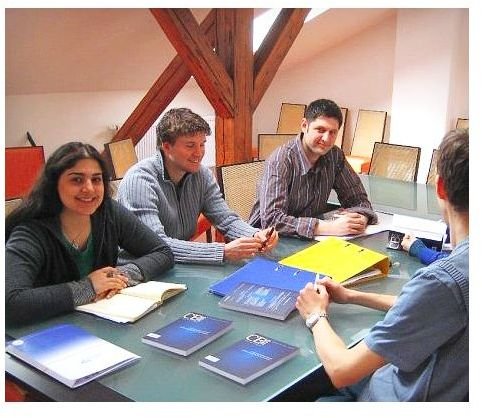Types of Meeting Agenda Formats
Purpose of Meeting Agendas
The main purpose of meeting agendas is to keep the meeting focused. The agenda is basically an outline of all topics that need to be covered during the course of the meeting. In addition, there is typically a set amount of time in which to cover each topic in order to have a more productive, faster meeting. When given in advance, meeting participants have time to prepare any questions or comments before the meeting. Below, you’ll find some common meeting agenda formats you can utilize. [caption id=“attachment_133059” align=“aligncenter” width=“640”] The agenda helps keep meetings productive[/caption]
The agenda helps keep meetings productive[/caption]
Formal Meetings
Formal meetings require a set agenda. There is no room for change. The topic of the agenda should be clearly listed at the top along with the leader of the meeting. The date, time and location is also listed. Either at the beginning or end of the agenda, all major attendees are listed. After the initial information, each major sub-topic is listed along with the person responsible for the topic, such as a team leader. Under each sub-topic, a formal meeting agenda lists details about what should be discussed including possible questions. There is a set time limit for each topic on the list, including a set time frame for questions and answers. The “Formal” meeting agenda format is all about covering a topic as thoroughly, but as quickly as possible. These are usually board meetings or meetings between companies.
Informal Meetings
Informal meetings have a more flexible agenda. The topic, meeting leader, date, time and location are all usually listed. However, an informal meeting agenda format does not have the same amount of detail as a formal agenda. The main sub-topics are listed, but additional details or topics are not required. A set time frame is not required, but a time frame for the entire meeting may be listed.
Adjustable Meeting
Adjustable meeting agendas are basically a rough outline of a meeting. These types of meetings do not have a set date or time and usually occur with last minute notice. A quick agenda is created to list the main topics to be discussed, along with any major questions pertaining to the topic. The final date and time of the meeting may be listed, but this is usually placed in the minutes. This is the most lenient of the meeting agenda formats. Often times, only the meeting leader has a copy of the agenda in order to run the meeting more effectively. This type of meeting often occurs when a problem suddenly arises, a project task needs to be reviewed or you have a weekly meeting that varies based on the time members have available.
Project Meetings
Agendas for projects are typically very detailed, but are focused entirely on the project. No other topics are discussed. When a team meets, the agenda lays out each portion of the project, including the team members responsible for each portion. A team leader discusses their portion of the project. The date, time, project title, project steps and time frame are all required. An expected start and end date for each project step or area is listed. Project meeting agendas can be used not only to keep project meetings on task, but to remind team members of what needs to be done and when.
Presentation Meetings
Most meeting agenda formats are restricted to the workplace or school environments, but presentation meetings can occur almost anywhere. Public and private presentations go smoother when an agenda is created. The agenda lets everyone involved know who the presenter is, the topic of the presentation and each sub-topic to be covered. The time frame for each sub-topic is listed to give attendees an idea of how long the presentation meeting will be. Presentation agendas often have images for aesthetic appeal. Presentation meetings can be formal or informal, so the required details for the agenda may vary slightly. A copy of the presentation is often included with the agenda so attendees can be make notes or write down answers to questions they ask.
Creating an Agenda
No matter what type of meeting agenda format you need, you can either create one from scratch or use one of the templates here on Bright Hub. Many templates can be found by searching for meeting agenda templates in Microsoft Word. Use the help section and use the search term meeting agenda template or agenda template. Image by StartupStockPhotos from Pixabay
